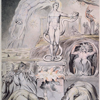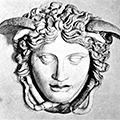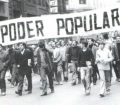Ross Woods [*] [**]
Throughout the twentieth century two of the most recurrent motifs in both Spanish and world poetry were humanity’s struggle with an increasingly technological and faceless society, and the need for poets to stand as witnesses, through language, through their art, to the changes in society that modernity brought with it. Indeed, modernity and modernisation inspired some of the best-known lyrics of the century —Eliot famously asked, ‘what are the roots that clutch, what branches grow / out of this stony rubbish?’; Lorca was reduced to being a ‘poeta sin brazos, perdido / entre la multitud que vomita’. For many poets, the alienation of the artist often became a thematic obsession, but in Spain it did not lead to great modernist or experimental works such as a Ulysses or a Waste Land after the dispersion of the Generación del ’27. Instead, under an oppressive dictatorship, artistic creativity was further stifled and poesía social was born out of necessity. In the hands of poets like Gabriel Celaya poetry became ‘un arma cargada de futuro’. Ultimately doomed to failure as a political project, Celaya’s ‘gritos en el cielo’ may not have influenced the style of later generations but it showed younger poets that there was a need for them to engage with society and, just as W.B. Yeats once attempted, ‘to hold in a single thought reality and justice’. Yet poetry prevailed, and the Generación del ’50, the novísimos, and others who followed rejected the idea that their art should not be ‘un bello producto’. They did not renege on the need to defend poetry’s role as a criticism of life. Indeed, since the 1920s Spanish poets have continued to follow Matthew Arnold’s advice to question reality through their art: with Lorca’s confrontational ‘yo denuncio’ in Poeta en Nueva York; in Angél González’s ‘áspero mundo’; in the cultured, almost surreal verses of a Martínez Sarrión or a Gimferrer; in the early, deeply personal poems of Luis García Montero; or in José Manuel Caballero Bonald’s recent lament, ‘atroz historia venidera, / ¿en qué manos estamos, cuántas trampas / tendrá que urdir la vida para seguir viviendo?’. It is from this lineage that Pablo Valdivia emerges, in this, his second collection of poetry, La velocidad de la niebla. A book composed on trains —a quintessential symbol of modernity and relentless industrial advance— here Valdivia announces himself as a poet who is as committed to producing poetry that has a ‘power of forming, sustaining, and delighting us, as nothing else can’ as he is to criticising the social, economic and class barriers of an unjust and intolerant society. His poetic prowess and his ire are equally apparent in the poem ‘(primera clase)’:
inmorales capillas
de derroche y cinismo.[…]
El infierno existe, este es su reino.
Tiene asientos enormes
donde se conspira lento el mañana.
One of the most powerful images from Valdivia’s first book is the one which gives it its title: Respirar bajo el agua. In the eponymous poem, the poet describes the beating rain that would literally cut his breath short as he walked home from work in the English springtime. This sheet of water seemed to envelope him, cutting him off from the world and leaving him gasping for breath: ‘El día tiene un pulso tan difícil y extraño / como respirar bajo el agua’. The beauty and melancholy of Valdivia’s first book are memorably encapsulated in these haunting verses. In ‘Respirar bajo el agua’ the poet’s isolation is expressed in terms of his environment: his temporal/natural environment (‘Me sumerjo en las tardes / sin esperanza / de los primeros días / de primavera’); his man-made environment (‘ilusiones que viven en las casas’); and his social environment (‘de cuerpos que caminan a lo lejos,’). Strikingly, it is only in ‘las tardes / sin esperanza’, where the poet finds some modicum of solace. However, this is a type of limbo, as evening is neither day nor night. The poem ends with an intense feeling of loneliness, and the poetic process itself only compounds the poet’s solitude: ‘la soledad escribe / mi nombre en el aire’.
This isolation is once again represented in a collection’s title: La velocidad de la niebla. In this instance, the poet describes the morning mist that would cover both the landscape and the train in which he travelled. This was an ominous mist that seemed to pursue the train and trap the travellers within, confining them to the prison of the carriages, unable to see the outside world. The poems of Respirar bajo el agua were predominantly melancholic, and often expressed a foreboding sense of hopelessness, as seen in ‘Respirar bajo el agua’. However, it is only from this position of despair that the poet can finally discover the ‘vastedad de un libro / por escribir’ in the poem ‘Luces de Malmarna’. Ultimately, Valdivia’s debut collection works on the basic premise that without pessimism there can be no hope. As he notes in relation to this book, ‘hay melancolía porque hay esperanza y hay esperanza porque hay negatividad’. In contrast, in La velocidad de la niebla there is no room for hope and ‘la mañana es un ahora imposible’. This desperation is clear in a poem like ‘(niño)’. A child —the symbol of innocence and possibility— searches for hope but only encounters death:
jirones del calor de su esperanza.Y nada encuentra,
salvo muerte: amables pesadillas.
The earlier book had been marked by nostalgic recollections of the past. However, in this collection, memories of the past are conspicuously absent. There is no future for the poet —instead, he is trapped in an interminable present without horizons, ‘siempre en camino hacia la incertidumbre / vivo en los horarios y los relojes’. However, these poems have a realistic setting— train stations and trains themselves. Indeed, the book fuses innumerable high speed train journeys across Europe into one monotonous, extended trip. Its narrative structure is deceptively simple: the early poems are set in train stations, the middle section details the train journeys themselves, while the final poems see the poet disembarking and reaching his destination. Yet, despite the reality of their setting, they remain outside of time, in a limbo world where the poet cannot look to the future or access the past. It is the physical and temporal limit imposed by the train which means that memory is not possible —he is trapped in a present that has no connection to its past and which is slowly rotting due to the lack of any hope for the future:
en un tiempo que no me pertenece
donde aún todo puede ser posible
y a la vez estar muerto.
The poet is trapped in the prisons of the carriages, he is enveloped by the ominous mist that pursues the train. Here, he finds a point of contrast between the specific (the train journey) and the universal (contemporary Western society). The microsom of the train reflects the alienation and disconnection in a postmodern society where the tertulia is dead and Facebook is king. In the same way that the horse rider in Jorge Guillén’s ‘Estatua ecuestre’ is so vibrant yet immobile, Valdivia’s poems oxymoronically contrast the physical movement of the train with the emotional and psychological stagnation with which he is afflicted:
arropado por la lluvia metálica
que descoyunta la velocidad
y el cansancio mudo que el aire afila.
Perhaps the greatest novelty of La velocidad de la niebla is Valdivia’s on-going development of his poetic form and style. Here, he develops his poetic project, with shorter poems that rely heavily on rhythm to reflect their content. Indeed, it is the search for musicality in these verses that is the standout feature of La velocidad de la niebla. Poems like ‘(eurostar)’ and ‘(cuarto de baño)’ demonstrate his mastery of internal rhyme and onomatopoeia. In ‘(Eurostar)’ one finds exceptional examples of assonance in Valdivia’s use of various combinations of vowels. In the five lines from the poem cited above, the poet interchanges all five vowel sounds in order to create a musical rhythym. Later, in ‘(cuarto de baño)’, the following assonant verses reflect the rhythmic monotony of the train journey:
Algunas azafatas se penetran,
tras la puerta entornada,
con los periódicos negros del día
This combination of assonance, onomatopoeia allied to a carefully thought out approach to poetic metre leads to poems whose themes are represented in the very sounds produced when reading them. The collection’s title poem, La velocidad de la niebla, is a great example of this, as it reflects the monotony, entrapment and despair of rail travel while also being the poetic representation of the crash of the train on the tracks:
(la velocidad de la niebla)
Velocidad llena de desaliento,
velocidad que nunca nos da tregua,
velocidad que picotea el alma,
velocidad con nombre de luz seca,
velocidad que vende hasta su sombra,
velocidad vacía, calma muerta.
Los kilómetros no nos pertenecen.
Un látigo de frío
disecciona las amígdalas yermas.
In contemporary Spain the word indignation is in fashion, and this collection of poems perfectly captures the zeitgeist of the 15-M movement. In the brief essay that inspired the youths at the Puerta del Sol, the Frenchman Stéphane Hessel makes this call to arms:
It is this omnipresent distrust and unease that leads to the overriding sentiment in La velocidad de la niebla of disgust and anger at a society which thinks it acceptable to prejudice, ostracise, and oppress others purely based on the colour of their skin, the languages that they speak, or simply on the class to which they are born. The train becomes a rotting carcass full of the remnants of this society of suspicion in ‘(sirenas)’:
donde valgo menos que una mentira
y la policía de los idiomas
se afana en jugar con mi abatimiento.
Later, in the poem, ‘(compañeros de viaje)’, the tension and fear in the carriages is palpable. Here, we see the isolation and paranoia that is created when one section of society considers themselves superior to another:
(compañeros de viaje)
Nos miran con recelo.
Moreno de uno ochenta, terrorista
del frío y anocheceres sin nombres.
Debajo de sus lenguas
tres cuchillos de muerte:
criminal, delincuente, extranjero.
Guárdanos en tu sombra, horizonte,
antes que sus palabras azoten con cristales
nuestra viva alegría.
While at first glance it seems like the collection is built on an interesting dialectic between the natural and the man-made world, the main focus of the collection is a thematic preoccupation with what the poet describes as ‘conflicto entre poseer o no poseer percepción del dolor’. In this regard, this ‘percepción del dolor’ can be seen as an ability to be critically and morally aware of the situation of those around you, regardless of whether they are from a similar background or from the same social class. The behaviour on these high-speed trains is in complete contrast to this, where those who believe themselves to be morally (and socially) superior to others attack with a display of their economic and social prowess:
Injusticia vestida de perdón educado.Las esquirlas de su desprecio abierto
apuntalan mi soledad inmensa.
The microcosm of the train, being trapped among socially and morally abhorrent people, leads to continuous outrage at the divisions that exist on these trains and also in contemporary society at large. The poet is trapped physically, temporally and emotionally in these carriages which are like prison cells. His despair rises as he encounters fellow passengers who treat him like an outsider:
y sentirse un extraño.
Miradas sin retorno,
desgobernada piel de nuestras noches.
The very structure of train travel leads to a hierarchy of first and second-class citizens, but the disdain shown by some travellers shows that it is often, as in ordinary western society, a case of those who are in and those who are out —of the privileged and of outcasts. The poem, ‘(vigilia)’, underlines this, echoing Lorca’s sadness when faced with ‘la otra mitad’ of New York:
por la vigilia eterna
de los que tienen todo,
de los que tienen nada.
Yet, it is not simply a case of criticising a world of haves and have-nots. Instead, the poet is concerned with the contemporary obsession with appearances, created by reality TV and Photoshop. In fact, this preoccupation with what he describes as ‘la disputa coyuntural por “parecer” y no por “ser”’ brings into question the authenticity of modern life —the train and the claustrophobia of these endless journeys without horizons just brings the lack of interpersonal relation into starker contrast.
Within the poems the focus on what is there and what is not —absences and presences— reflects this contemporary apathy towards authenticity. Indeed, this obsession with appearances has led to a ‘(delirio)’: Delirio de poseer el vacío, / frenesí de usurparnos / y acumular ausencias. This is evident in the poem, ‘(verdad de un instante)’, as the poet can sense the reality of the world in which he lives:
(verdad de un instante)
Devastación hermosa
del hielo frágil.
La flema congelada,
los restos de los días.
Detrás de las montañas
puedo sentir el mar.
But the existence of the mountains and the sea is not sufficient to overcome the unreality created by his contemporaries. Valdivia explains it thus:
Essentially, his indignation is caused by a fascination with the apparent value of an object (for instance, how expensive it looks rather than how expensive it is) as opposed to its real value. This commodification of society leads to an obsession with appearance and leads to the ostracization of those who do not seem to fit in with a certain social class: in other words, the conflict between seeming and being. In La velocidad de la niebla, this phenomenon is expressed in terms of a vacuum. In fact, it is the train itself that represents this dark side of daily life from which one cannot escape, and this is manifested in the form of the ‘vacío’ which faces the author in ‘(exilio)’. In this poem, ‘el tren como exilio / es de una material oscura y profunda’.
There are two poems which contrastingly capture the sentiments that drive this collection of poems: ‘(vergüenza)’ and ‘(al otro lado de las vías)’. The former expresses the poet’s disenchantment with contemporary Western society that the ‘vagones’ inspire. The former, the last poem in La velocidad de la niebla, offers some respite to the reader and sees the poet finally consider the possibility of the future. The pervading sentiments in the poems of La velocidad de la niebla are the poet’s strong sense of ire and disenchantment with what he witnesses on these trains and, concomitantly, in the world in general. However, in ‘(vergüenza)’, this anger turns to shame and the indignity of the situation of so many is keenly felt:
de perfección de plástico y miseria,
respiro vergüenza.
The first lines repeat one of the motifs that permeate the collection, as the man-made, functional interior of the carriage is equated to misery. And this sadness leads to shame as the poet surveys his surroundings. Indeed, the poem ends with the poet resigned to the perpetuation of the status quo:
con ojos del pasaje
y por mucho que insista nada cambie.
Yet, while ‘(vergüenza)’ exemplifies the content of the majority of the poems, in the last of these, ‘(al otro lado de las vías)’, the poet appears to completely change tack. Valdivia chooses to end an inherently angry, indignant and pessimistic book with an intriguing poem. It completely moves away from the thematic thrust of what has preceded it and, in contrast, can even be regarded as a love poem. His journey over, the poet finally reaches his destination, the arms of his lover. Here, he returns to a theme that defined the loneliness of the poems in Respirar bajo el agua —the hope and comfort to be found in the form of the other. In spite of the negativity in La velocidad de la niebla, a disgust inspired by the behaviour of what the poet describes as ‘una clase minoritaria de privilegiados que tratan con desdén todo lo que no sea ellos, que están convencidos de que el mundo se hizo para servirles’, this poem sees the collection end on an optimistic note. For Valdivia, the means of escape from the torment of these high-speed trains —and from the inequality that pervades our daily lives— is to be found in human solidarity. In its final poem, La velocidad de la niebla ultimately overcomes the impossibility and pessimism that define the book, and, instead, it stands as the poetic call to arms of an irate young man who, like Stepháne Hessel and thousands of indignant Spaniards, wants people to become outraged.
[*] Este trabajo es la versión inglesa del prólogo publicado en castellano en el poemario de Pablo Valdivia La velocidad de la niebla editada en 2011 en la colección Los libros del Genio Maligno por la Asociación Cultural Cancro.
[**] School of Languages and Cultures. Victoria University of Wellington. Nueva Zelanda.
Contacto con el autor: ross.woods@vuw.ac.nz






























